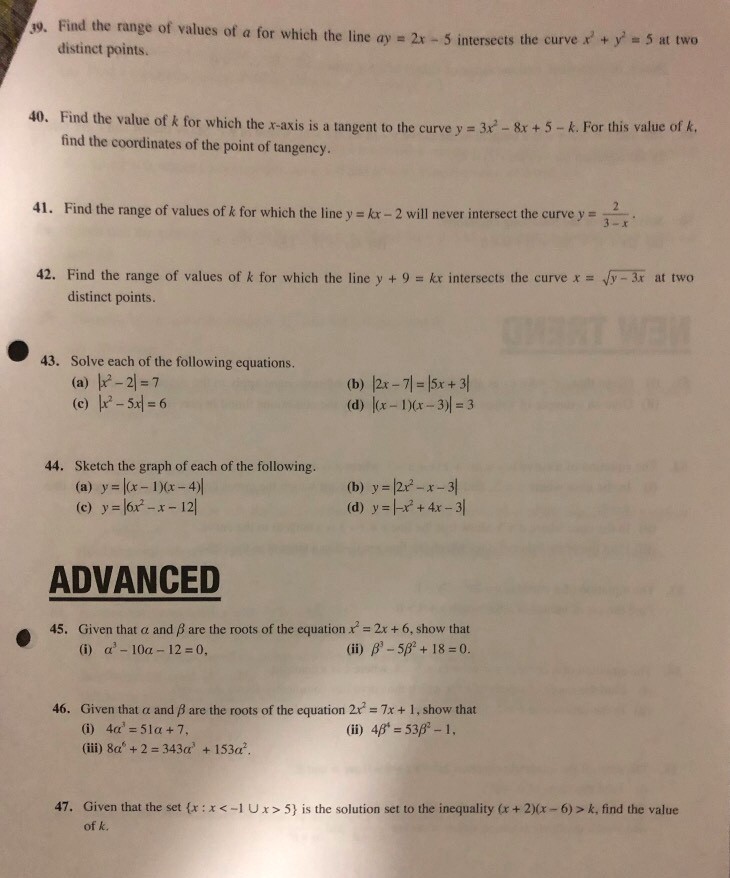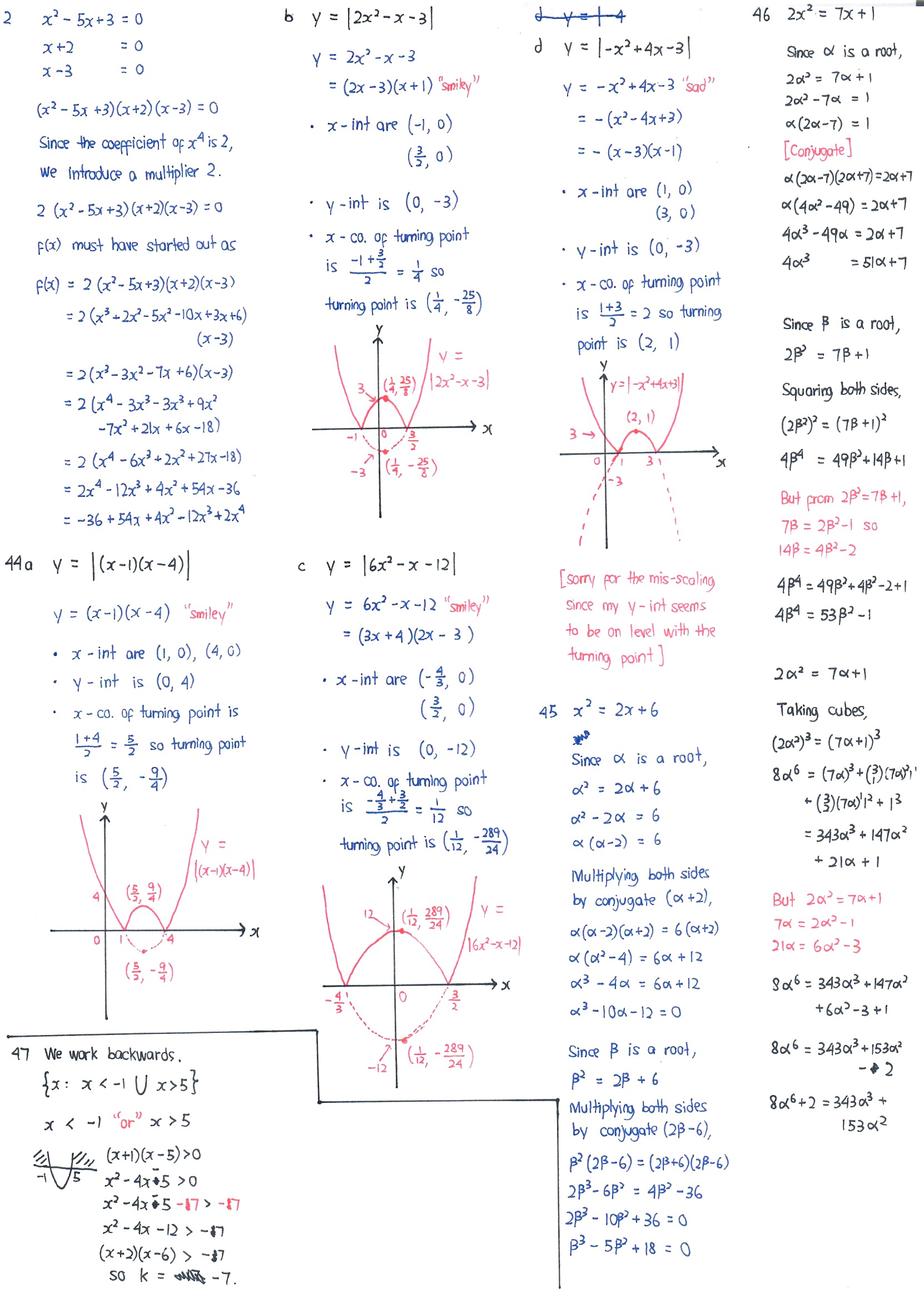Ask Singapore Homework?
Upload a photo of a Singapore homework and someone will email you the solution for free.

Question
secondary 4 | A Maths
3 Answers Below
Anyone can contribute an answer, even non-tutors.

Thank you
See 3 Answers
Ignore the Q2 at the start. Q47 is somewhere on the bottom left.
The techniques for Q45 and Q46 are similar. Observe the two different methods in which I use conjugates to obtain a polynomial in two different forms, Ax3 + Bx2 + D = 0 or Ax3 + Cx + D = 0 respectively.
Take Q45 for example, x2 = 2x + 6 so clearly a2 = 2a + 6 (just change x to a or another letter).
To get the form Ax3 + Cx + D = 0, I bring over the 2x first to get
x2 - 2x = 6
x (x - 2) = 6
Here is when I introduce the conjugate x + 2 to both sides. There will not be a term in x2.
To get the form Ax3 + Bx2 + D, we leave the equation as x2 = 2x + 6 (without bringing the 2x over) and introduce the conjugate 2x - 6 to both sides in this manner . There will not be a term in x1.
There are of course other ways to obtain the solutions (we can multiply both sides by x, x + 2 or even any reasonable linear term!), just that the ones I have chosen (i.e. the conjugates at the right time) are the most straightforward.
For Q47, it is simply inequality solving done in reverse. We usually do inequalities from the start as quadratic inequalities to obtain the range of values of x; now we are given the range of values of x and we need to find the original quadratic inequality. I assume you have learnt set theory in E Maths to know what the union symbol "U" means.
If one side of the equation contains only the x2 term and the other contains both the term in x and the constant, we should introduce the conjugate to obtain a cubic polynomial which has no term in x.
The combination in which the term in x is on one side and the other two on the other side has practically no or little use for these questions.
Quadratic graphs are well known to be symmetric about the vertical line passing through the turning point.
When y = 0,
x = -4/3 or x = 3/2
Because of the symmetric properties, the x-coordinates of the turning point is the average value of these x-values. In other words, it’s the average of -4/3 and 3/2, which is 1/12 (since -4/3 + 3/2 = 1/6).
So x = 1/12.
Sub in x = 1/12 into the original unmodulused quadratic equation to get y = -289/24.






